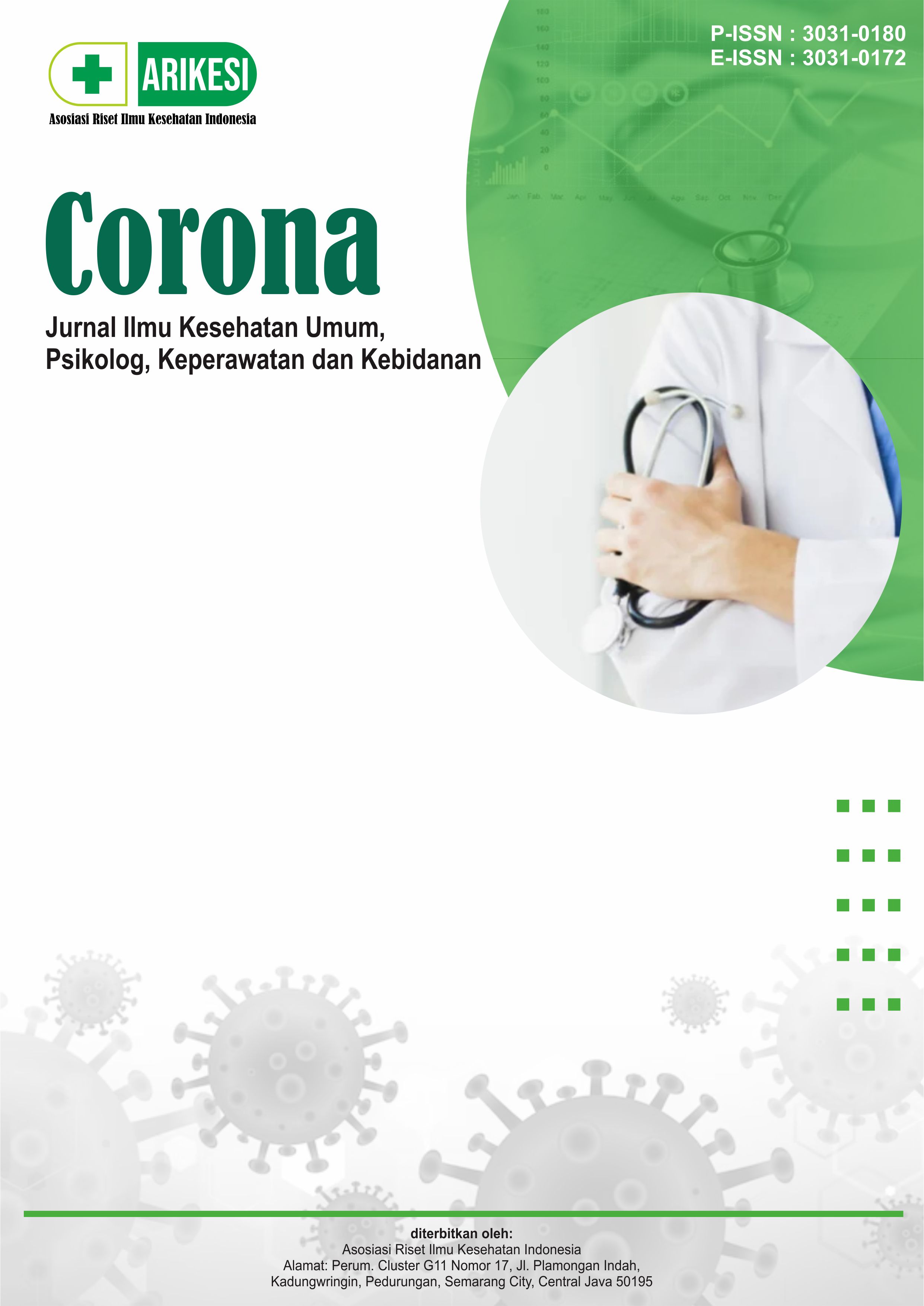Knowledge About Osteoarthritis and Its Related Risk Factors In Fourth Grade Students In Nursing Department Of Alfarabi Collage
DOI:
https://doi.org/10.61132/corona.v2i3.530Keywords:
osteoarthritis, Risk factors, nursing department, Alfarabi collageAbstract
Introduction Osteoarthritis (OA) is the most common articular disease of the developed country and cause of chronic disability, and may cause joint failure.Currently, it is more prevalent than it used to be, and it is predicted that this tendency will continue as life expectancy and the prevalence of obesity increase.OA is related to age, but is associated with a variety of both modifiable and non-modifiable risk factors, including obesity, lack of exercise, genetic predisposition, bone density, occupational injury, trauma, and gender. It is a major cause of disability in elderly populations around the globe, especially in developed countries. the aim of study to identify Knowledge about osteoarthritis and its related risk factors in fourth grade students in nursing department of Alfarabi collage and to assess Knowledge about osteoarthritis and its related risk factors in fourth grade students in nursing department of Alfarabi collage . methodology The methodology for studying the knowledge about osteoarthritis and its related risk factors in fourth-grade students in the nursing department of Alfarabi College can be utilize a cross-sectional research design to assess the knowledge of fourth-grade nursing students about osteoarthritis and its related risk factors. A convenience sampling method will be used to select participants from the fourth-grade nursing students at Alfarabi College. The sample size will be determined based on the total number of fourth-grade students in the nursing department. Results The sociodemographic characteristics of 256 students at Al-Farabi College were analyzed. The majority of respondents were male (73.8%), over 22 years old (35.3%), and engaged in manual labor (53.0%). The study found that students had higher knowledge about certain aspects of osteoarthritis, such as postmenopausal women being more at risk for osteoporosis than osteoarthritis (87.5%), while their knowledge about female gender as a risk factor was lower (39.4%). Students also had higher knowledge about joint pain as a symptom of osteoarthritis (82.8%) compared to redness in the joint (53.1%).Finally, while there was a high significance between having a first-degree relative with knee osteoarthritis and knowledge, there was no significance between being clinically diagnosed with osteoarthritis and knowledge among the students. Conclusion the study of sociodemographic characteristics and knowledge of osteoarthritis among students at Al-Farabi College revealed that there were significant associations between gender, occupation, awareness of knee osteoarthritis as a disease entity, and having a first-degree relative with knee osteoarthritis with knowledge about the condition. However, there was no significant association between age, being clinically diagnosed with osteoarthritis, and knowledge.
Downloads
Downloads
Published
How to Cite
Issue
Section
License
Copyright (c) 2024 Corona: Jurnal Ilmu Kesehatan Umum, Psikolog, Keperawatan dan Kebidanan

This work is licensed under a Creative Commons Attribution-ShareAlike 4.0 International License.





